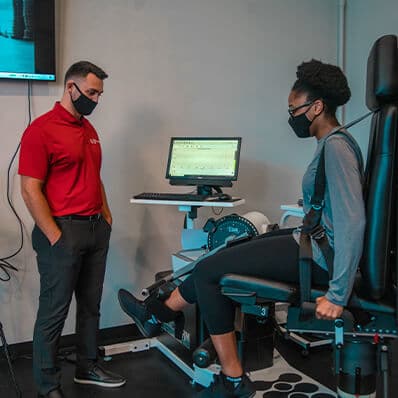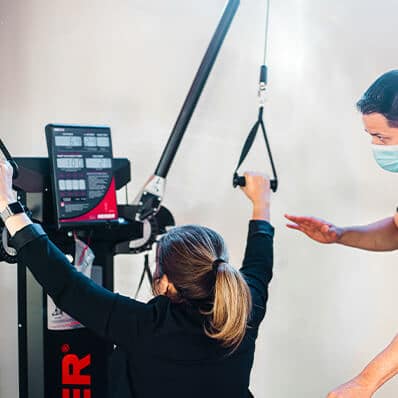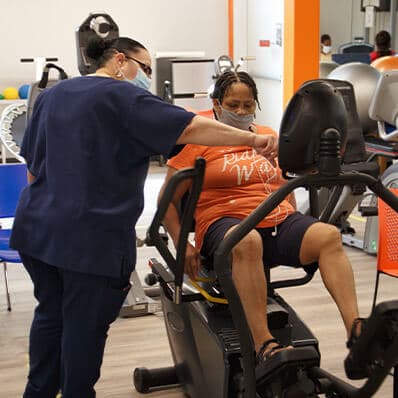This patient is a 37 year old registered nurse who is known to be Asthmatic but well controlled, and has a history of migraines and uterine fibroids with painful menses. She is an avid exerciser and is a member of a cross-fit exercise group that meets and exercises four times weekly. She gives a 2 year history of recurring episodes of LBP aggravated usually by increased work loads during her shift and which generally responds well to her exercise routine and settles within 2-3 days. About 7 weeks prior to her evaluation, she developed back pains after an unusually challenging work shift but noted on that occasion that she now had intermittent pains in the anterior of her left thigh. She was concerned about the new symptoms and sought medical attention at the staff clinic and had an MRI done which revealed a small central disc herniation at the L5 S1 level with no other bony or soft tissue anomaly. She was prescribed Norgesic with minimal relief and at her physician follow-up was referred to PT with a diagnosis of Mild L5 S1 Disc Prolapse.
She gave no history of trauma, or other symptoms or signs of serious spinal pathology including bowel or bladder disturbance, unexplained weight loss, saddle anaesthesia or widespread neurological symptoms. Her chief complaint was of intermittent central back pain, which was cramping in nature and rated at 4/10 on the Numerical Rating Scale (NRS) with occasional radiation into the mid-anterior aspect of the left thigh.
Pain is aggravated by static forward flexed postures such as during patient dressings and pains are reduced by raising the arms overhead and leaning backwards. She noted that sitting is more comfortable than standing. Her symptoms had generally decreased in frequency and intensity from onset but appeared to have plateaued at current levels. Despite her discomfort she had not stopped from work but was uncertain about resuming her exercise routine.
Physical Findings:
Static testing:
Impaired back extensor muscular endurance (could not clear the sternum off the plinth and hold for more than 20 seconds).
Abdominal endurance tests were normal.
Dynamic testing:
Nil temporal or spatial gait deviations noted
Full painfree ROM in flexion, extension, sideflexion and rotation.
Aberrant movement on return from flexion, which was associated with pain.
Repeated movements did not increase or decrease symptoms
Nil impairment in motor control of the lumbar spine musculature during sit to stand transitions or ascending/descending stairs. However there was abnormal timing of the activation of the paravertebral muscles on return from flexion. bending
Palpation
Hypermobile L3 on PAIVM with reflex muscle spasm in the left sided paravertebral muscles at that level.
Tenderness over the L3 and L4 spinous processes.
While the patient’s rehabilitation is currently on-going, initial response to three weeks of stratified care demonstrate elimination of pain with reduced disability, measured with the Oswestry Disability Index and an improvement in the patient’s overall risk stratification on the SBST.
It has been noted that the TBC is the only model that demonstrates no significant difference in intertester reliability between novice and experienced clinicians[5]. Additionally, its ease of implementation relative to the significant training and time investment of other stratification models, such as the MDI[6] gives it notable advantages in clinics where Physiotherapists of varying experience manage LBP patients. The merger of the SBST and the TBC also allows for consideration of the role of cognitive behavioural approaches to managing patients with yellow flags and chronic LBP, which the TBC does not explicitly address on its own. As such this hybrid approach offers clinicians an evidence based and pragmatic approach to stratification of patients and allocation of existing physiotherapy resources in patients with LBP.




